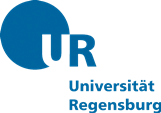Optimizing Program Path Coverage in Big Data Software Testing through Divide and Conquer and Hybrid PSO-Simulated Annealing Techniques
Pages : 23-31, DOI: https://doi.org/10.14741/ijcet/v.12.1.4
Download PDF
Abstract
Software testing is important to make sure that applications are reliable, functional, and secure. It involves many aspects, and test case generation and program path coverage are considered the most vital because it increases fault detection by covering all possible execution paths. Many traditional approaches like Genetic Algorithms (GA), Particle Swarm Optimization (PSO), and Simulated Annealing (SA) have been employed in test case generation. Unfortunately, these approaches do not perform well with larger, complex software systems due to the high cost of computations, getting stuck in local optima, and really poor scalability. In order to tackle the mentioned limitations, this research thus proposes an optimized test path generation framework according to hybrid PSO-SA approach: It combines static analysis with Control Flow Graph (CFG) and Program Dependency Graph (PDG) and is followed by feasible execution paths extraction from the static analysis. A Divide and Conquer-based clustering technique applied then clusters the paths based on similarity. The next step after the clustering is the optimization performed using Hybrid PSO-SA algorithm. Optimized paths are bundled together to eliminate almost all forms of redundancy while maximizing path coverage. The evaluations clearly indicate the proposed approach attaining superior test coverage, efficiency, and fault demarcation than existing approaches. It saves on computational overhead while improving the effectiveness of the test suite through the elimination of redundant test paths. The findings show that the Hybrid PSO-SA method can be a very good method for increasing software testing efficiency, especially for large-scale applications that find it hard to scale and adapt with traditional methods.
Keywords: Software Testing, Test Path Optimization, Particle Swarm Optimization, Simulated Annealing, Path Coverage.












 MECHPGCON, MIT College of Engineering, Pune, India
MECHPGCON, MIT College of Engineering, Pune, India AMET, MIT College of Engineering, Pune, India
AMET, MIT College of Engineering, Pune, India International Conference on Advances in Mechanical Sciences
International Conference on Advances in Mechanical Sciences  International Symposium on Engineering and Technology
International Symposium on Engineering and Technology International Conference on Women in Science and Engineering
International Conference on Women in Science and Engineering




